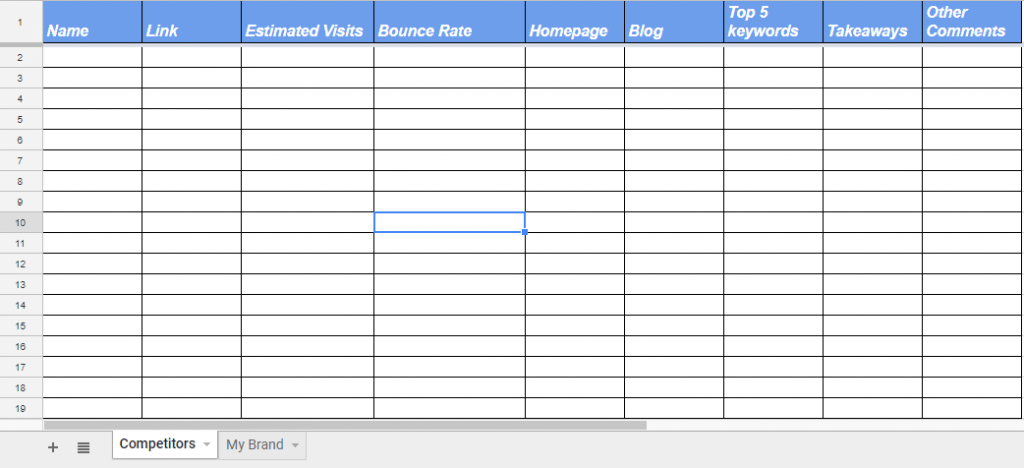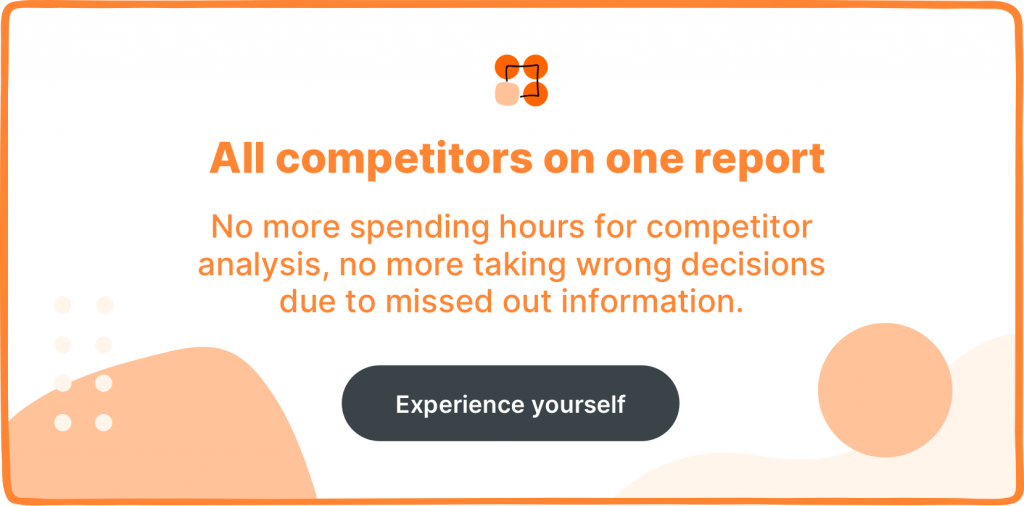Summarize this article via
Whether you are a business owner or a marketer, social media competitor analysis is one of the first tasks you should be doing. Analyzing the competitors is highly important and once done correctly, pays off – you see their weaknesses and use them as your unique selling points. Or you just use them in your marketing efforts to highlight your strengths.
So, why is competitor analysis important, and how to conduct it effectively? Keep reading to learn the answer.
What is a social media competitor analysis and why do you need it?
Before entering the market, you need to see if there is any other company using the idea. These are your competitors – a brand, company, or website that offers the same products or services as you do.
To have a successful business, you need to analyze all of your competitors and find their strengths for which a client chooses them and the weaknesses from which you can take a benefit.
Types of competitors
You will have direct and indirect competitors. Direct competitors are the ones who offer the same services as you do. Indirect competitors have similar but not the same offers.
In the beginning, you need to research both types of competitors to get a general understanding of their offers and key takeaways from them. Research them both as a competitor and as a prospective customer – what did you like most? What could have been different? Is there anything you would like to see but the company doesn’t have?
To find all of your competitors (if you are not already familiar with them), just search the keywords in Google and Bing, see what search results you get, and break them down to direct and indirect competition. Ask yourself the following questions:
- Who are my competitors?
- What is their main keyword?
- What products/services do they offer?
- What is their strategy?
- What are their strengths and weaknesses?
- What are my opportunities as a competitor?
- Is there a powerful platform they are using that I should, too?
You can add some other brand-related questions you think will be beneficial for your marketing efforts. Just make sure to get all the key takeaways necessary for beating the competitors.
Social media competitor analysis
As we mentioned above, competitor analysis is highly important and diverse – you need to analyze their website, social media pages, messaging, and so on. In this article, we will mainly concentrate on analyzing competitors’ social media presence.
Analyzing the social media pages of your competitors is important to understand their messaging, the type of content they share – images, infographics, videos, blog articles. Analyze which ones perform better, which types of content have the most engagement, and see if that will work for you, too.
Related article: How to track and analyze competitors’ social media content strategy?
To see what social media platforms your competitor is using, simply go to their website where at the bottom of the page you will find social sharing buttons. Click the link and start your research.
To learn more about the use of social media and the performance criteria of your competitors; check out our article; Top 5 social media competitor analysis tools
Make qualitative and quantitative research
There is qualitative and quantitative research to conduct. The names themselves are a hint – qualitative research shows the quality of the messaging, images, and so on, while quantitative shows the number of likes, comments, etc. Both of this information are important for understanding how the messaging works, how interested their audience is.
Analyze the competitors’ activity
To see how active your competitors’ social media pages are, like/subscribe to their channels and wait for notifications, check the frequency of their posting, the timing they choose to target their audience. Think about how you can use this information and how can it be beneficial for your social media postings. How often do your competitors post? What time do they post? These are questions you need to get an answer to.
To learn more about the insights you can get by a social listening tool; check out our article; Top 10 social media listening tools
Check their responsiveness
Another important aspect is how the brand keeps communication with its page followers. This is why responding to the comments should be your N1 homework when it comes to social media competitor analysis. Check what type of comments their audience makes. Are they negative or positive? What do their customers complain about? What are they happy with? If the commenters are not satisfied with something, you should take this complaint into account and try to avoid it for your brand or product. This way you will make sure your audience won’t leave negative comments as everything has been arranged accordingly.
Also, analyze the replies by the brand – do they reply to their customers’ complaints or do they just leave it there with no action? Nobody likes being ignored, especially if it’s a customer. However, some social media managers don’t bother to reply to negative comments thinking ignoring is the best strategy.
Think of it this way – your followers are prone to reading others’ comments and the replies they get. If you answer an unsatisfied commenter in a polite way, give an explanation or just apologize for their bad experience, your readers will see the care you have for your brand. Additionally, you can offer a discount or a giveaway as a form of compensation or just because the client spoke up about a problem you didn’t have.
So, if you see your competitor fails to communicate with their audience on social media, take this as an advantage and do the opposite – be friendly, nice, and always respond to your audience in a relevant way.
For social media managers, analyzing their user behavior should be very important.
How to conduct a socal media competitor analysis
There are two main ways of doing competitor research – manually and through a tool or service.
For doing competitor research manually, create a Google Spreadsheet, write the name of the competitor, and other details. You can use this competitor research template.
Doing competitor analysis manually can be time-consuming and requires lots of attention.
If you want this process to be faster, you can just trust a social media management tool to do this for you. Sociality.io, for example, offers a detailed competitor page analysis on all platforms.
Due to this feature, you no longer have to spend long hours on competitor analysis. Sociality enables you to prepare competitor analysis reports for Facebook, Instagram, YouTube, and Twitter. All of these take a few seconds!
Suggested article: How to prepare Instagram competitor analytics report in 5 minutes?
It also shows you your competitors’ engagement performance. You can measure and compare the difference between yours and theirs.
What’s more, you can analyze competitors’ content and review your own content strategy.
As you see, a competitive analysis can be done easily and in an accurate way – no need to spend your valuable time on handling this manually. Just give it a start and get the best out of this offer.






